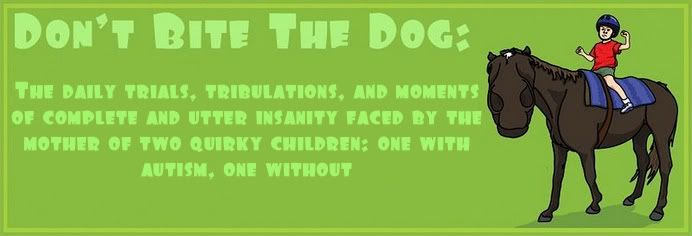









I’ve been spending a lot of time outside, attempting to tire my children out in time for the nap that I would love to one day get to take around 2-3pm on a hot summer day. Unfortunately, my success has been limited- to tiring myself out and energizing the little ones even further!
I’ve gotten Sierra into feeding Rocket, so she goes out every morning and gets hay for him, then goes off to do her own thing. Jaymes has discovered the joy of picking veggies out of the garden- unfortunately, his discovery has not gone as far as understanding that it is preferable to just pull a pepper off the plant rather than picking the entire plant out of the ground, dunking it in water, and cramming it into a plastic bucket filled with muddy slime. I have to give the boy credit though, technically he DID plant it…
Jaymes is missing summer camp still. I feel so bad for him, I imagine it has to be very hard to spend a week at the coolest camp in NC, where he’s a VIP with adoring fans then get stuck coming back home to our less than thrilling life.
It was so funny, when we dropped him off, I was all sad and wanting to linger with him. He turned, looked at me, and said “byeeee!” and tried to shove me out the door. I took the hint. He had zero homesickness during his time at camp- in fact he repeatedly told his counselor that he was staying and mommy needed to stay home. I’m not offended; I wouldn’t want to go home either!
He really had the time of his life at camp. It was totally worth the money and the long drive. He had his own counselor, his own room, and all the fun activities you can think of. Kiddo got to swim THREE times a day, go on the zip line, make s’mores, play in the sand, dress up in funky wigs… He got to go boating, fishing, and they even have the most incredibly cool sensory room with the whole bubble column and fiber optic dangly light deals. VERY nice.
He did art work, which he covered the door of his room with. When we were leaving with his bags packed, I asked him if he wanted to take them and he was very adamant that they stay on the door for future campers to enjoy. Silly boy.
His counselor did detailed (and I mean DETAILED) notes twice a day (I think), and she was really funny. I had a great time reading those notes. There were several “laugh out loud” moments for sure.
Picking him up was not exactly the joyous reunion I’d been hoping for. This was the longest I have ever been away from my little man, and by the time we arrived to get him, I was really eager to snuggle him. He is, after all, my baby. Kids trickled in, most of them running towards their parents, where hugs and kisses were exchanged. One little blonde boy saw his mom, and bolted the opposite direction. In hindsight, this was an omen. Jaymes came in toward the end of the stream of children. The minute he set eyes on me, he started screaming. “Mommy go home! Jaymes stay at camp!” It broke my heart, because I knew ahead of time he would have a hard time coming back home. I felt so bad for being the one to drag him back to boring old life, after s much fun at camp.
He pretty much screamed and squirmed and fussed through the whole talent show portion of things, although he did stop long enough to do his talent, which was making a picture with glue and glitter. It was cute, at least right up until the point it was time for him to be done, and they dragged the little table back. Jaymes took off after the table, grabbed his wet picture and ran back to me. He was upset still about knowing he had to leave, and when he is upset he likes to take things he’s made (usually drawings that he cares about) and shred or otherwise mutilate them, then cry about it like I did it. In this case, he took one hand and smeared the wet glittery glue across the page, then grabbed my arm (which was still looking pretty nasty due to a really gross bacterial infection that I don’t even know how I got) and rubbed glitter into the oozing blisters on my arm. That one did not feel so good, but my blistery, nasty arm looked rather festive. Within about two seconds, I was head to toe glitter, but again, festive. So it was all good.
It took Jaymes a couple days to calm down and accept that he was home. Once he was ok with that, I started noticing how pleasant he was being, and how nicely he was talking. He told me all about camp, and asked when he could go back. I promised him I’d do as much as possible to get him in next year- I sure hope I can make good on that.
Camp Royall is amazing. I have never met a group of people as tolerant, accepting, kind, generous, and enthusiastic as these folks. The camp is beautiful; the facilities are super fun, clean and safe, and if you were to wander upon it, you would not know it was an autism-specific camp. I am so glad that Jaymes got to have this wonderful experience, for the first time in his life he went somewhere that he was just a normal kid, doing normal summer camp things. That is priceless.
I missed him the entire week, the house just felt so empty without Jaymes. I did enjoy sleeping in every day though, rather than being jolted awake by the sound of Jaymes pounding, kicking, and slamming his bedroom door! Jason really needed the break, he finally got to relax and stop freaking out over every little thing.
Sierra had the time of her life. The whole week was all about Sierra. We took her to her very first movie; she chose Green Lantern and really enjoyed it. We bought a big bag of popcorn, and Sierra made it hers. During most of the movie she had the top half of her body buried in the bag until she munched herself into a food coma and passed out on my lap. She was perfect- quiet, still, enjoyed the movie. We made trips to places she loves, like the mall and the make-your-own-sundae frozen yogurt place. We played outside, and went to the playground. She really, really had a fun week. Sometimes we have to get a break from autism- sometimes we all just need to be people, and Sierra is no exception. She really needed her special “vacation” week.
NC folks, if ever you’re looking for a great camp for your kids on the spectrum, Camp Royall is the place to go.







